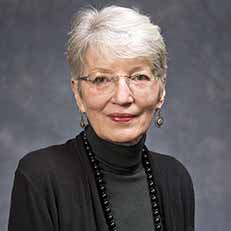BLOOMINGTON and INDIANAPOLIS, Ind.—The Indiana nonprofit landscape is broad and diverse, serving a variety of clients, members, and communities across the state, and a new tool from the Indiana Nonprofits Project gives the public a one-stop destination for information on the state of the state’s nonprofit organizations.
The Indiana Nonprofit Survey Data Tool is based on information from more than 1,000 Indiana nonprofits who responded to a survey conducted by the Center for Survey Research and the Indiana Nonprofits Project at Indiana University. The new tool provides information on the characteristics of Hoosier nonprofits, including membership organizations, as well as their similarities and differences. These characteristics include: basic components such as their size and field of activity, organizational structure and management, finances and financial management , use of technology, marketing, evaluation, employees and volunteers, as well as nonprofits’ public education, collaboration, and networking efforts.
“This interactive tool makes it possible for anyone accessing the site to explore the rich diversity of Indiana nonprofits of all types and characteristics—not only public charities, but all other types of nonprofits; not only human service nonprofits, but other major service fields; not only large organizations, but small ones without any paid staff,” said Dr. Kirsten Grønbjerg, director of the Indiana Nonprofits Project. “Visitors to the website will be able to investigate recent data on an unusually broad array of topics about Indiana nonprofits.”
Grønbjerg, a distinguished professor of public affairs at the O’Neill School of Public and Environmental Affairs and Efroymson Chair in Philanthropy at the Lilly Family School of Philanthropy, said the survey results were collected in the Indiana Nonprofit Sector project’s 2017-18 survey of a representative sample of Indiana nonprofits. Three previous rounds of surveys were administered in 2002, 2007, and 2010. The Indiana nonprofit sector encompasses an estimated 60,000+ entities in all.
A few highlights from the survey data include:
- Demand. 93% of state nonprofits surveyed said the demand or need for their organization’s programs, services, or activities either stayed the same or increased in the past three years.
- Number of full-time equivalent employees: 38% of Indiana nonprofits say they have no full-time employee equivalents, while 19% have more than six.
- Age: 22% were created after 2000; 23% were founded between 1980 and 1999; and 24% began between 1950 and 1979.
- Membership: Nearly half (44%) of Indiana nonprofits who define themselves as membership associations reported a steady membership base, with increases and decreases in membership numbers staying roughly the same.
“We hope the survey respondents and other Indiana nonprofits will find it a useful way to explore how their own nonprofits compare to others,” Grønbjerg said. “We also believe that the tool will help community and state policy makers to understand better the role that Indiana nonprofits play in local communities and across the state. Finally, we hope the tool will be of interest also to other researchers, by providing them with comparisons for their own work so that we all can expand our collective understanding of the nonprofit world.”
For more information, visit the Indiana Nonprofits Project.
About the O’Neill School of Public and Environmental Affairs at Indiana University Bloomington
The O’Neill School is a world leader in public and environmental affairs and is the largest school of public administration and public policy in the United States. In the 2020 list of “Best Graduate Public Affairs Programs” by U.S. News and World Report, the school ranks first in the country. Five of its specialty programs are ranked in the top-five listings, including the No. 1 nonprofit management program.
About the Lilly Family School of Philanthropy
The Indiana University Lilly Family School of Philanthropy at IUPUI is dedicated to improving philanthropy to improve the world by training and empowering students and professionals to be innovators and leaders who create positive and lasting change. The school offers a comprehensive approach to philanthropy—voluntary action for the public good—through its academic, research and international programs and through The Fund Raising School, Lake Institute on Faith & Giving, the Mays Family Institute on Diverse Philanthropy and the Women’s Philanthropy Institute.


